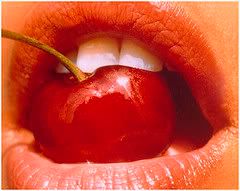History of the Jack-o-Lantern

People have been making jack-o-lanterns at Halloween for centuries. The practice originated from an Irish myth about a man nicknamed "Stingy Jack." According to the story, Stingy Jack invited the Devil to have a drink with him. True to his name, Stingy Jack didn't want to pay for his drink, so he convinced the Devil to turn himself into a coin that Jack could use to buy their drinks. Once the Devil did so, Jack decided to keep the money and put it into his pocket next to a silver cross, which prevented the Devil from changing back into his original form. Jack eventually freed the Devil, under the condition that he would not bother Jack for one year and that, should Jack die, he would not claim his soul. The next year, Jack again tricked the Devil into climbing into a tree to pick a piece of fruit. While he was up in the tree, Jack carved a sign of the cross into the tree's bark so that the Devil could not come down until the Devil promised Jack not to bother him for ten more years.
Soon after, Jack died. As the legend goes, God would not allow such an unsavory figure into heaven. The Devil, upset by the trick Jack had played on him and keeping his word not to claim his soul, would not allow Jack into hell. He sent Jack off into the dark night with only a burning coal to light his way. Jack put the coal into a carved out turnip and has been roaming the Earth with it ever since. The Irish began to refer to this ghostly figure as "Jack of the Lantern," and then, simply "Jack O'Lantern."
In Ireland and Scotland, people began to make their own versions of Jack's lanterns by carving scary faces into turnips or potatoes and placing them into windows or near doors to frighten away Stingy Jack and other wandering evil spirits. In England, large beets are used. Immigrants from these countries brought the jack o'lantern tradition with them when they came to the United States. They soon found that pumpkins, a fruit native to America, make perfect jack o'lanterns.
Despite the colorful legends, the term jack-o'-lantern originally meant a night watchman, or man with a lantern, with the earliest known use in the mid-17th century; and later, meaning an ignis fatuus or will-o'-the-wisp. The names "Jacky Lantern" and "Jack the Lantern" persist in the oral tradition in Newfoundland, referringing to the Will o' the wisp type phenomena, rather than the carved pumpkin Jack o' Lantern.














4 Comments:
This was interesting as I had never read about the origins of the carving, although the Devil does come across as less than sharp in the story as he is easily and repeatedly fooled in fairly obvious ways.
Hope you've got enough lore to sustain for another 8 days.
aahhhh, haaaa, I never knew that. pretty cool.... I love carving jack o lanterns- but out here in the south they rot within like 2 days total bummer to watch you kick ass pumpkin turn to slime and slide off the stairwell.... yuck
Interestingly enough, the Jews also have a similar myth of the Wandering Jew (which I think comes from Russia). Pretty much the same story, but without the fruit. That seems to be a Western European touch, a totemic thing.
Fascinating post.
2 Dollar Productions: Glad that you liked it. The Devil does come off as quite the moron in this telling, all in good fun though.
Shroom-Monkey: They're fun to throw when they get all rotted and slimy like that though, just a tip ...
SamuraiFrog: It is a European thing, as are all of the more fun and quirky origin stories of this sort.
Post a Comment
<< Home